Having your garage door locked shut can be a real pain – not being able to get inside when you need something from the garage or having to figure out how to fix the lock each time. But this doesn’t have to be your reality! With a few simple steps, anyone can learn how they can quickly and easily open their locked garage door.
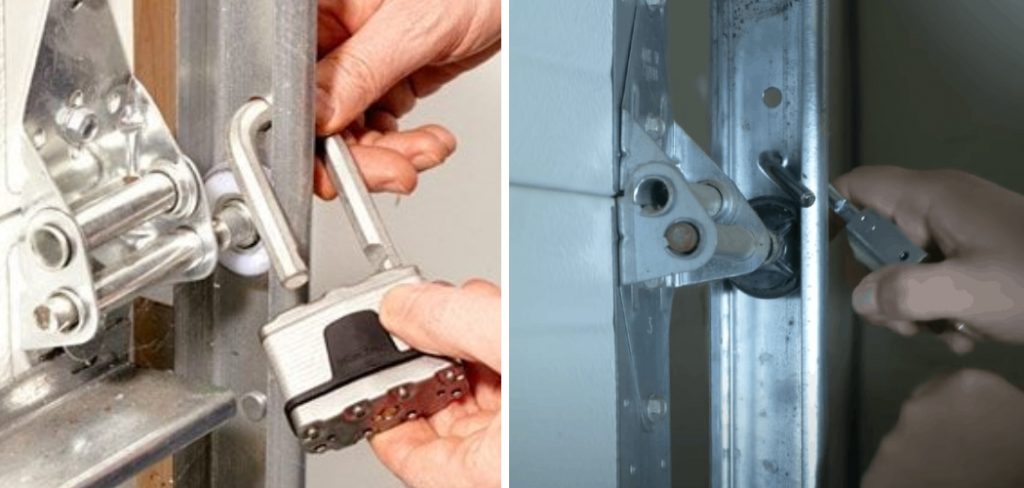
Whether you have a keypad, remote, or manual garage door opener, the steps for getting in are largely the same.
This article will guide you through unlocking a jammed or frozen deadbolt from any major brand of residential automatic garage doors so that you can gain access whenever you need it. Keep reading if you want to know how to get in a locked garage door!
What Will You Need?
Before you can begin to unlock your garage door, you’ll need a few tools. These include:
- Screwdriver
- Pliers
- Hammer
- Small flathead screwdriver or an Allen wrench (depending on the manufacturer of your particular garage door opener)
- Can of WD-40 or similar lubricant spray (optional but recommended)
You’re ready to get started once you have all of these items gathered.
10 Easy Steps on How to Get in a Locked Garage Door
Step 1: Locate the Release Lever
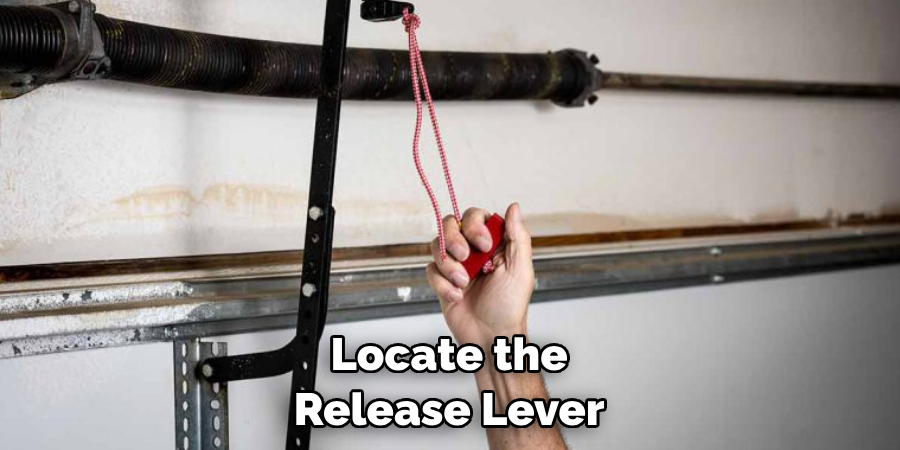
The first step in getting into a locked garage door is to locate the release lever. This is usually located somewhere near the bottom of your garage door and can be seen when you stand outside looking in. It should be easy to spot – typically a metal bar with a red or orange plastic coating.
Step 2: Pull the Release Lever
Once you have found the release lever, pull it towards you to disconnect the door from its opener. This will allow you to open and close the garage door manually. If you have difficulty locating the lever, refer to your owner’s manual for specific instructions on how to locate and pull it.
Step 3: Attach Pliers or Hammer If the Release
If the release lever is stuck or hard to pull, you may need some additional force. Using a pair of pliers or a hammer, attach the tool to the release lever, ensuring a secure grip. Then, gently apply force to the lever.
Be careful not to use excessive force, as this could potentially damage your garage door system. If the lever remains stuck, consider applying some WD-40 or similar lubricant to ease the tension. Remember, it’s all about getting in a locked garage door without causing unnecessary damage.
Step 4: Manually Lift the Door
With the release lever disengaged you should now be able to lift the garage door manually. Stand with your feet shoulder-width apart and lift with your legs, not your back, to avoid injury. The door might be heavy, so if you struggle, ask someone for help.
Once the door is lifted high enough, prop it open with something sturdy. If it doesn’t stay up or seems notably heavy, it may be a sign that the springs are broken, or the system needs maintenance. Again, avoid forcing anything to prevent further damage. Once open, you can retrieve what you need or work on fixing the lock.
Step 5: Inspect the Lock Mechanism
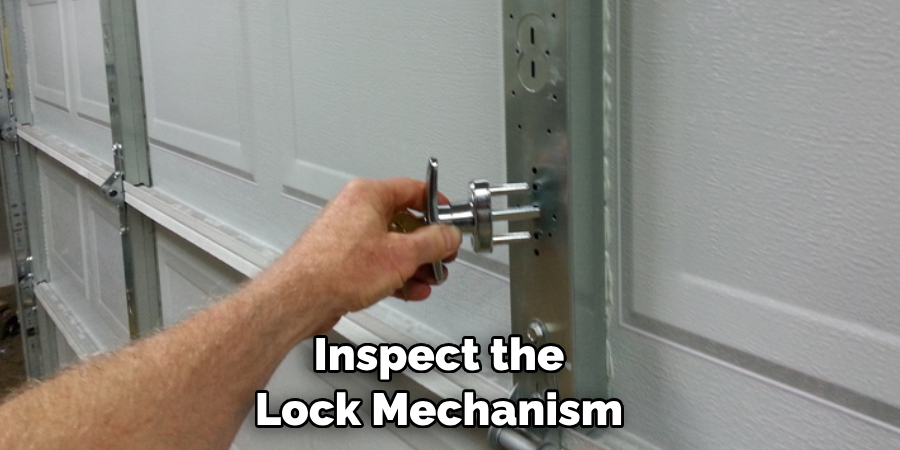
Once you’ve gained access to the garage, it’s time to inspect the lock mechanism to identify the problem. Look for any obvious signs of wear or damage, such as broken parts, rust, or misalignment.
Also, check if any screws are loose and tighten them if necessary. Be careful not to tamper excessively with the mechanism to avoid causing further damage. Remember, understanding the issue is a critical step in figuring out how to get in a locked garage door.
Step 6: Test the Lock
Once you’ve identified and fixed any potential issues with the lock mechanism, it’s time to test it. If a keypad is present, enter the code again to see if the door opens. If this fails, double-check your connections and settings before moving on.
If using a remote, try pressing the button multiple times to see if it works. If not, change the batteries in the remote and test again. If this still doesn’t work, there may be an issue with the garage door opener.
Step 7: Reset Your Garage Door Opener
If none of the above methods worked to unlock your garage door, you may need to reset your garage door opener. This involves turning off the power supply to the system, waiting several seconds, and then turning it back on again. Doing this can sometimes solve strange problems with the lock system that you may have yet to be aware of.
Step 8: Lubricate Your Lock
If all else fails, consider lubricating your lock. Grab a can of WD-40 or similar lubricant and spray it into the keyhole, focusing on the moving parts. This will help to reduce tension in the mechanism and allow it to move more freely.
Step 9: Call a Professional
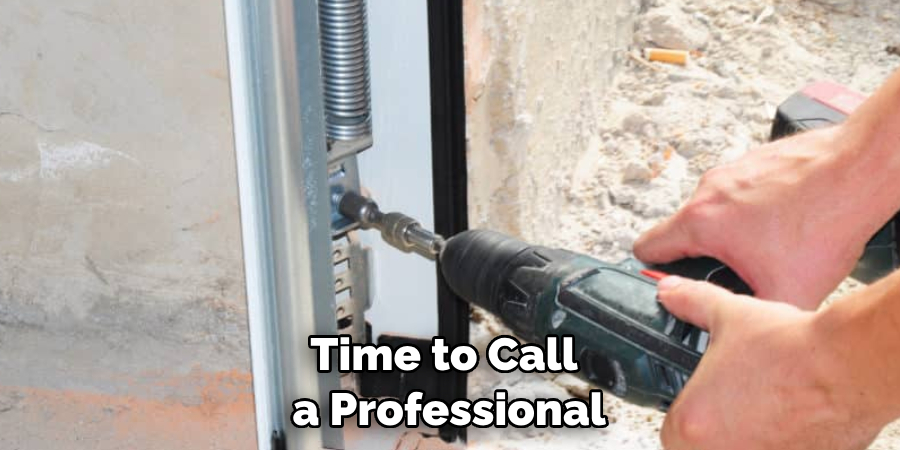
If none of these steps have worked, it may be time to call a professional. A locksmith or garage door repair specialist can diagnose any issues and recommend the best solution for your problem. They can also provide tips on how to prevent similar issues in the future.
Step 10: Take Preventative Measures
To prevent future lockouts, it is important to keep up with regular maintenance on your automated garage door opener system. Frequently check that all screws are tight and proper alignment of parts. It is also important to keep track of who can access the system and consider changing the code or remote regularly for added security.
By following these steps, you can be assured that you will get in a locked garage door quickly and easily whenever it happens. With simple preventative maintenance, you can reduce the chances of your door locking unexpectedly.
5 Additional Tips and Tricks
- If you have a key for the garage door that was accidentally left inside, try using a paperclip or other small object to open the lock. This trick may only sometimes work, but it’s worth trying if you don’t have another way in.
- If your garage has an emergency release cord, pull it down to disengage the opener from the door and manually open it. This usually requires a bit of force, but it’s much easier than breaking in!
- If you can access the garage from inside your house, try using an external window or pet door to get into the garage without unlocking it.
- Check nearby for windows that may be unlocked or slightly open, and use them as an entrance.
- If all else fails, you may need to call a locksmith or garage door repair specialist who can help you gain entry without damaging the door or its frame. They have the tools and expertise to safely and quickly open even the most stubborn doors!
With these tips in mind, you’ll be able to get into your garage with relative ease. Just remember to always have an extra key in case of emergency!
5 Things You Should Avoid
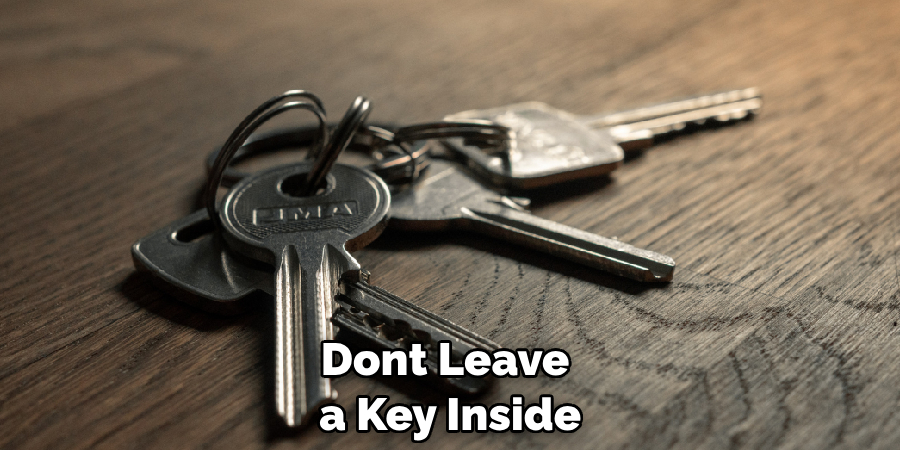
- Never try to force open a garage door, as this can cause serious damage.
- Don’t use any tools that could potentially damage the locks or frames of the door.
- Avoid using anything other than an external window or pet door to enter your garage from within your home, as this may be considered trespassing in some areas.
- Don’t leave a key inside the garage, as an intruder could use it to gain access.
- Refrain from attempting DIY repair methods on your own if you are not confident in your abilities; it’s much better to call a professional and have them take care of the job.
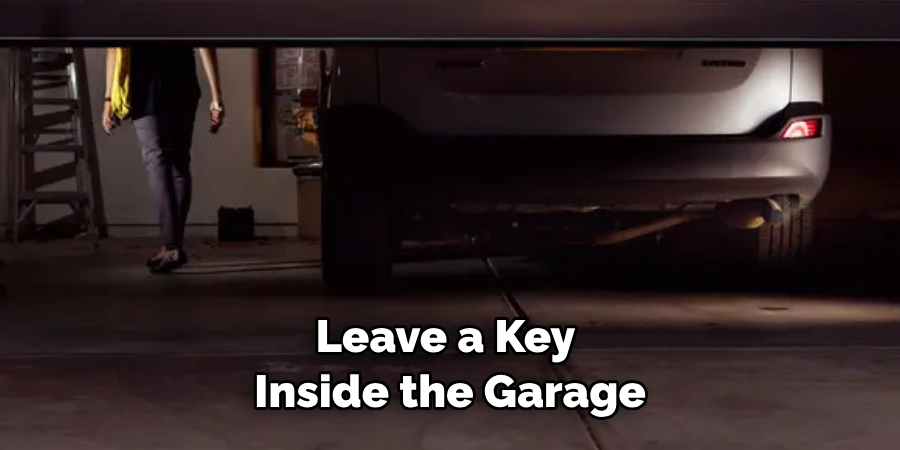
By following these tips, you’ll be able to quickly and easily gain access to your garage without causing any damage or putting yourself at risk.
Can You Force a Garage Door Open From the Outside?
No, trying to force a garage door open from the outside is not recommended. Doing so can cause serious damage to the locks or frames of the door, leaving you with a costly repair bill. If your garage door is locked and you need to get in, refer to the above steps for alternative entry methods.
Additionally, attempting to break open a garage door is highly risky and can not only put your life in danger but could also be considered trespassing or burglary. It’s always best to take the safe route and use one of the abovementioned methods.
Conclusion
In conclusion, getting into a locked garage door may seem like a hassle, but with these tips and a little patience, you have all the tools to get in. No matter the type of lock – electronic or manual, openers or padlocks – you can find a solution. So don’t worry if you can’t get inside the garage; take comfort knowing that you can find different ways to do it!
If you need a different method, consider calling a professional locksmith who may help open your door. All this shows that most problems can be solved – even ones as excruciating as this! With these tips, your garage should be back to its best in no time, and help get your life back on track.
Hopefully, the article on how to get in a locked garage door was helpful and gave you an insight into how to manage such a problem. With the right tools and know-how, you can open any door! Just remember always to be safe and have patience. Good luck!
About
Safety Fic is a distinguished figure in the world of Diy design, with a decade of expertise creating innovative and sustainable Diy solutions. His professional focus lies in merging traditional craftsmanship with modern manufacturing techniques, fostering designs that are both practical and environmentally conscious. As the author of diy, Safety Fic delves into the art and science of Safety Fic-making, inspiring artisans and industry professionals alike.
Education RMIT University
(Melbourne, Australia) Associate Degree in Design (Safety Fic) Focus on sustainable design, industry-driven projects, and practical craftsmanship. Gained hands-on experience with traditional and digital manufacturing tools, such as CAD and CNC software.
Nottingham Trent University
(United Kingdom) Bachelor’s in diyfastly.com and Product Design (Honors) Specialized in product design with a focus on blending creativity with production techniques. Participated in industry projects, working with companies like John Lewis and Vitsoe to gain real-world insights.
Publications and Impact
In diy, Safety Fic his insights on indoor design processes, materials, and strategies for efficient production. His writing bridges the gap between artisan knowledge and modern industry needs, making it a must-read for both budding designers and seasoned professionals.
